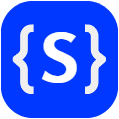Python Assignment Help: Tips, Tools, and Resources
There’s a moment every programming student knows. The cursor blinks. The error message makes no sense. The deadline is in six hours. And suddenly, that intro-level Python course feels less educational and more existential.
Python assignment help isn’t about being weak at coding. It’s about being smart enough to recognize when you’re stuck in a loop, both literally and figuratively.
Students across MIT, community colleges, and online bootcamps all hit the same walls. The syntax looks simple until it isn’t. The logic seems obvious until the output is completely wrong.
Why Python Trips Up So Many Students
Here’s something professors rarely admit: Python’s reputation as a “beginner friendly” language creates unrealistic expectations. Students walk into CS50 or their first data analytics course thinking they’ll breeze through because they heard Python reads almost plain English. Then week three arrives. Functions. Scope. Lists versus tuples. Suddenly nothing reads plain anything.
The problem compounds for students outside computer science. A finance major at NYU taking Python for quantitative analysis didn’t sign up to understand recursion. An environmental science student at UC Berkeley needs to process climate data, not debate the merits of object oriented programming. These students need practical assignment help that meets them where they are, not where a textbook assumes they should be.
According to a 2023 Stack Overflow Developer Survey, Python remains the most wanted language among developers learning to code. But wanting and succeeding are different beasts. The dropout rate in introductory programming courses hovers around 30% at many universities, and confusion during early assignments is a primary driver.
Common Python Assignment Problems (And What Actually Fixes Them)
Students searching for python homework help usually fall into predictable categories. Recognizing the pattern is half the battle.
1. Indentation Errors:
Python’s whitespace sensitivity is elegant in theory and maddening in practice. One misplaced space creates chaos. The fix isn’t just visual scanning. It’s configuring your IDE to show invisible characters and using consistent tabs or spaces throughout.
2. Logic That Runs But Outputs Garbage:
The code executes. No red text. But the result is wrong. This happens when the syntax is correct but the thinking isn’t. Tracing through code line by line with print statements or a debugger reveals where assumptions broke down.
3. Library Import Confusion:
Pandas, NumPy, Matplotlib: these libraries power real world Python work. But importing them correctly, understanding their methods, and troubleshooting version conflicts frustrates students who just want their bar chart to render.
4. Loop and Conditional Logic:
The difference between for and while, when to use elif versus nested if statements, how to avoid infinite loops. This is where python programming help for beginners becomes essential. Abstract explanations don’t stick. Concrete examples with immediate feedback do.
5. Variable Naming and Scope Issues:
Students often reuse variable names without realizing they’ve overwritten something important. A variable defined inside a function doesn’t exist outside it. This concept of scope trips up beginners constantly. Clear, descriptive variable names and understanding local versus global scope prevent hours of confusion.
Tools That Actually Help With Python Assignments
Not every resource deserves attention. Some tools genuinely accelerate learning while others create dependency. Here’s an honest breakdown
| Tool | Best For | Limitation |
|---|---|---|
| PyCharm (JetBrains) | Professional grade debugging, code completion | Steep learning curve for beginners |
| VS Code | Lightweight, customizable, free | Requires extension setup |
| Jupyter Notebook | Data science assignments, visualization | Not ideal for larger projects |
| Python Tutor (website) | Visualizing code execution step by step | Limited to small code snippets |
| Replit | Quick testing, collaboration | Performance issues with complex code |
For students needing help with python coding assignments, Python Tutor deserves special mention. Created by Philip Guo at UC San Diego, it lets users paste code and watch execution unfold visually. Seeing how variables change through each iteration transforms abstract concepts into something tangible.
Stack Overflow remains the go to resource for specific error messages, but it requires a skill: learning to search effectively. Copying an error message verbatim into Google rarely works. Stripping it down to the core issue and adding “Python 3” yields better results. Reddit communities such as r/learnpython also provide surprisingly patient explanations for beginners who frame their questions clearly.
When Self Study Isn’t Enough
There’s no shame in admitting when python assignment help online becomes necessary. The difference between struggling productively and spinning wheels matters. Three hours debugging a typo teaches nothing except frustration.
Tutoring services, university writing centers that now include coding support, and online platforms offer structured assistance. The key is finding help that explains rather than just delivers answers. A solution without understanding is worthless for the exam that follows.
Office hours remain criminally underutilized. Professors and TAs at institutions from Stanford to state universities report that the same ten students attend every session while others suffer silently. The students who show up often aren’t the ones who need help most. They’re simply the ones who learned that asking questions isn’t weakness.
Study groups offer another underrated advantage. Explaining a concept to a classmate solidifies your own understanding. Teaching forces clarity in ways passive reading never does.
Building Python Skills That Last Beyond the Assignment
Short term fixes solve immediate problems. Long term strategies prevent future ones.
Code daily, even briefly. Fifteen minutes of practice beats three hour weekend cramming sessions. Spaced repetition works for programming just as it does for languages.
Read other people’s code. GitHub repositories, open source projects, even classmates’ solutions (after submission) reveal different approaches to identical problems.
Break assignments into smaller pieces. A program that analyzes a dataset and generates a report is actually five smaller tasks. Tackle each independently.
Comment excessively at first. Explaining code in plain English while writing it forces clarity. The comments can be trimmed later.
Fail faster. Running code frequently catches errors early. Waiting until 200 lines are written before testing invites disaster.
Build something personal. A script that organizes music files or tracks expenses applies classroom concepts to real problems. Motivation increases when the project matters to you.
Google’s Python course, freely available through Coursera, provides structured practice that complements university assignments. Microsoft’s Python for Beginners video series offers similar value. These aren’t replacements for coursework but supplements that reinforce concepts through different explanations.
Learn Python Programming from Scratch
The Bigger Picture
Python isn’t going anywhere. Its dominance in data science, machine learning, automation, and web development ensures that the skills students struggle with today become career assets tomorrow. A report from the World Economic Forum consistently ranks programming among the top skills for future employment.
The frustration of a broken script at 2 AM is temporary. The problem solving mindset developed through debugging is permanent. Every student who’s cursed at an IndentationError and eventually fixed it has learned something no lecture could teach: persistence matters more than talent.
Python assignment help exists because learning is messy. The students who seek resources, ask questions, and refuse to let confusion become defeat are the ones who eventually write code that works. And then, maybe for the first time, that blinking cursor feels less threatening and more inviting.


